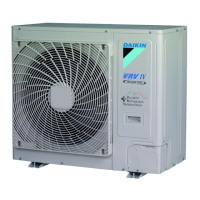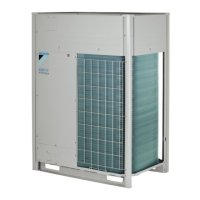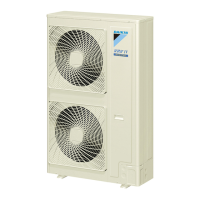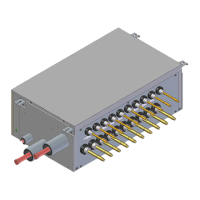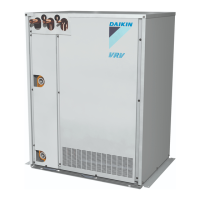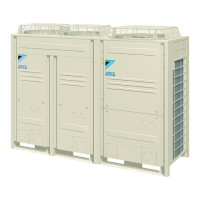2 Field wiring
$GUWTGVJCVVJGƂGNFYKTKPIJCUDGGPECTTKGFQWVCEEQTFKPIVQVJG
KPUVTWEVKQPUFGUETKDGFKP(KGNFYKTKPIQPRCIG|CEEQTFKPIVQ
the wiring diagrams and according to the applicable legislation.
3 Power supply voltage
Check the power supply voltage on the local supply panel. The
XQNVCIGOWUVEQTTGURQPFVQVJGXQNVCIGQPVJGKFGPVKƂECVKQPNCDGN
of the unit.
4 Ground wiring
Be sure that the ground wires have been connected properly and
that the ground terminals are tightened.
5 Insulation test of the main power circuit
Using a megatester for 500 V, check that the insulation resistance
QH/ŝQTOQTGKUCVVCKPGFD[CRRN[KPICXQNVCIGQH8&%
between power terminals and ground. Never use the megatester
for the transmission wiring.
6 Fuses, circuit breakers, or protection devices
Check that the fuses, circuit breakers, or the locally installed pro-
VGEVKQPFGXKEGUCTGQHVJGUK\GCPFV[RGURGEKƂGFKP(KGNFYKTKPI
QPRCIG|$GUWTGVJCVPGKVJGTCHWUGPQTCRTQVGEVKQPFGXKEG
has been bypassed.
7 Internal wiring
8KUWCNN[EJGEMVJGEQPVTQNDQZCPFVJGKPUKFGQHVJGWPKVQPNQQUG
connections or damaged electrical components.
8 Pipe size and pipe insulation
Be sure that correct pipe sizes are installed and that the insulation
YQTMKURTQRGTN[GZGEWVGF
9 Stop valves
Be sure that the stop valves are open on both liquid and gas side.
10 Damaged equipment
Check the inside of the unit on damaged components or squeezed
pipes.
11 Refrigerant leak
Check the inside of the unit on refrigerant leakage. If there is a
refrigerant leak, try to repair the leak. If the repair is unsuccess-
ful, call your local dealer. Do not touch any refrigerant which has
leaked out from refrigerant piping connections. This may result in
frostbite.
12 Oil leak
Check the compressor for oil leakage. If there is an oil leak, try
to repair the leak. If the repairing is unsuccessful, call your local
dealer.
13 Air inlet/outlet
Check that the air inlet and outlet of the unit is not obstructed by
paper sheets, cardboard, or any other material.
14 4GEQTFVJGEQPVGPVUQHƂGNFUGVVKPI
Record them on the accessory REQUEST FOR THE INDICATION
label.
And attach the label on the back side of the front panel.
15 Record the installation date.
Record the installation date on the accessory REQUEST FOR
THE INDICATION label.
And attach the label on the back side of the front panel.
15.2. /QPKVQTKPIHWPEVKQPCPFƂGNFUGVVKPIU
6JGQRGTCVKQPQHVJGQWVFQQTWPKVECPHWTVJGTDGFGƂPGFD[EJCPIKPI
UQOGƂGNFUGVVKPIU0GZVVQOCMKPIƂGNFUGVVKPIUKVKUCNUQRQUUKDNGVQ
EQPƂTOVJGEWTTGPVQRGTCVKQPRCTCOGVGTUQHVJGWPKV
6JGUGVVKPIECPCNUQDGRGTHQTOGFXKCVJG2%EQPƂIWTCVKQPUQHVYCTG
Below relevant Monitoring mode (mode 1) and Field setting mode
OQFGUGVVKPIUCTGGZRNCKPGFKPFGVCKN*QYVQCEEGUUVJGOJQYVQ
EJCPIGVJGXCNWGQHVJGUGVVKPIUCPFJQYVQEQPƂTOVJGOKUGZRNCKPGF
KP/CMKPIƂGNFUGVVKPIUQPRCIG|+PVJCVEJCRVGTCPGZCORNG
is given on how to make a setting. It is advised to check this procedure
before accessing, checking and changing below settings.
1PEGVJGFGHCWNVUKVWCVKQPQHVJGUGIOGPVKPFKECVKQPKUEQPƂTOGFUGG
/CMKPIƂGNFUGVVKPIUQPRCIG|VJGOQFGCPFOQFGECP
be accessed.
Making settings is done via the master outdoor unit.
15.2.1. Mode 1
Mode 1 can be used to monitor the current situation of the outdoor
WPKV5QOGƂGNFUGVVKPIEQPVGPVUECPDGOQPKVQTGFCUYGNN
$GNQYVJGUGVVKPIUKPOQFGCTGGZRNCKPGF
[1-0]= shows whether the unit you check is a master, sub 1 or sub 2
unit
r 0QKPFKECVKQPWPFGƂPGFUKVWCVKQP
r 0=outdoor unit is master unit
r 1=outdoor unit is sub 1 unit
r 2=outdoor unit is sub 2 unit
Master, sub 1 and sub 2 indications are relevant in multiple
QWVFQQTWPKVU[UVGOEQPƂIWTCVKQPU6JGCNNQECVKQPQHYJKEJ
outdoor unit is master, sub 1 or sub 2 are decided by the
unit’s logic.
6JGOCUVGTWPKVUJQWNFDGWUGFVQKPRWVƂGNFUGVVKPIUKP
mode 2.
[1-1]= shows the status of low noise operation.
r 1=unit is currently operating under low noise restrictions
r 0=unit is currently not operating under low noise restric-
tions
Low noise operation reduces the sound generated by the
unit compared to nominal operating conditions.
Low noise operation can be set in mode 2. There are two
methods to activate low noise operation of the outdoor unit
system.
6JGƂTUVOGVJQFKUVQGPCDNGCPCWVQOCVKENQYPQKUGQRGTC-
VKQPFWTKPIPKIJVVKOGD[ƂGNFUGVVKPI6JGWPKVYKNNQRGTCVGCV
the selected low noise level during the selected time frames.
The second method is to enable low noise operation based
QPCPGZVGTPCNKPRWV(QTVJKUQRGTCVKQPCPQRVKQPCNCEEGU-
sory is required.
[1-2]= shows the status of power consumption limitation operation.
r 1=unit is currently operating under power consumption
limitation
r 0=unit is currently not operating under power consump-
tion limitations
Power consumption limitation reduces the power consump-
tion of the unit compared to nominal operating conditions.
Power consumption limitation can be set in mode 2. There
are two methods to activate power consumption limitation of
the outdoor unit system.
6JGƂTUVOGVJQFKUVQGPCDNGCHQTEGFRQYGTEQPUWORVKQP
NKOKVCVKQPD[ƂGNFUGVVKPI6JGWPKVYKNNCNYC[UQRGTCVGCVVJG
selected power consumption limitation.
The second method is to enable power consumption
NKOKVCVKQPDCUGFQPCPGZVGTPCNKPRWV(QTVJKUQRGTCVKQPCP
optional accessory is required.
[1-5]= shows the current T
e
target parameter position.
4GHGTVQ'PGTI[UCXKPICPFQRVKOWOQRGTCVKQPQP
RCIG|HQTOQTGFGVCKNUCDQWVVJGEQPVGPVUQHVJKUXCNWG
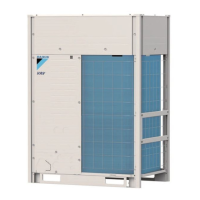
